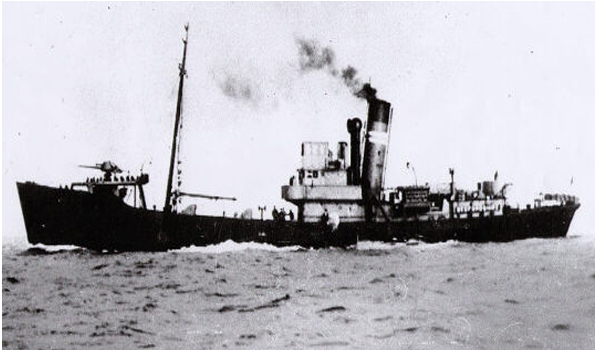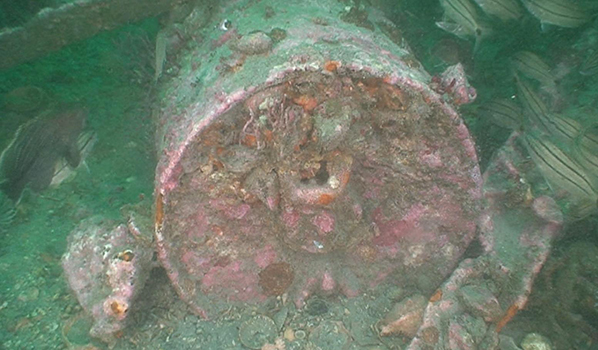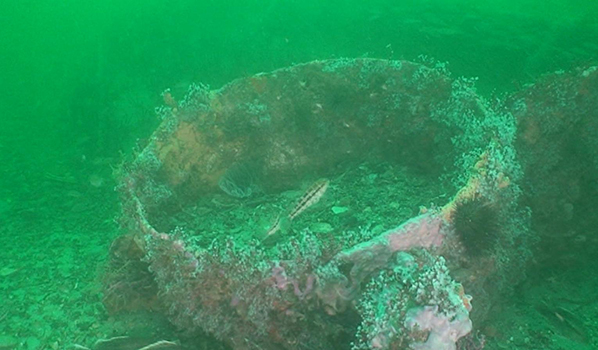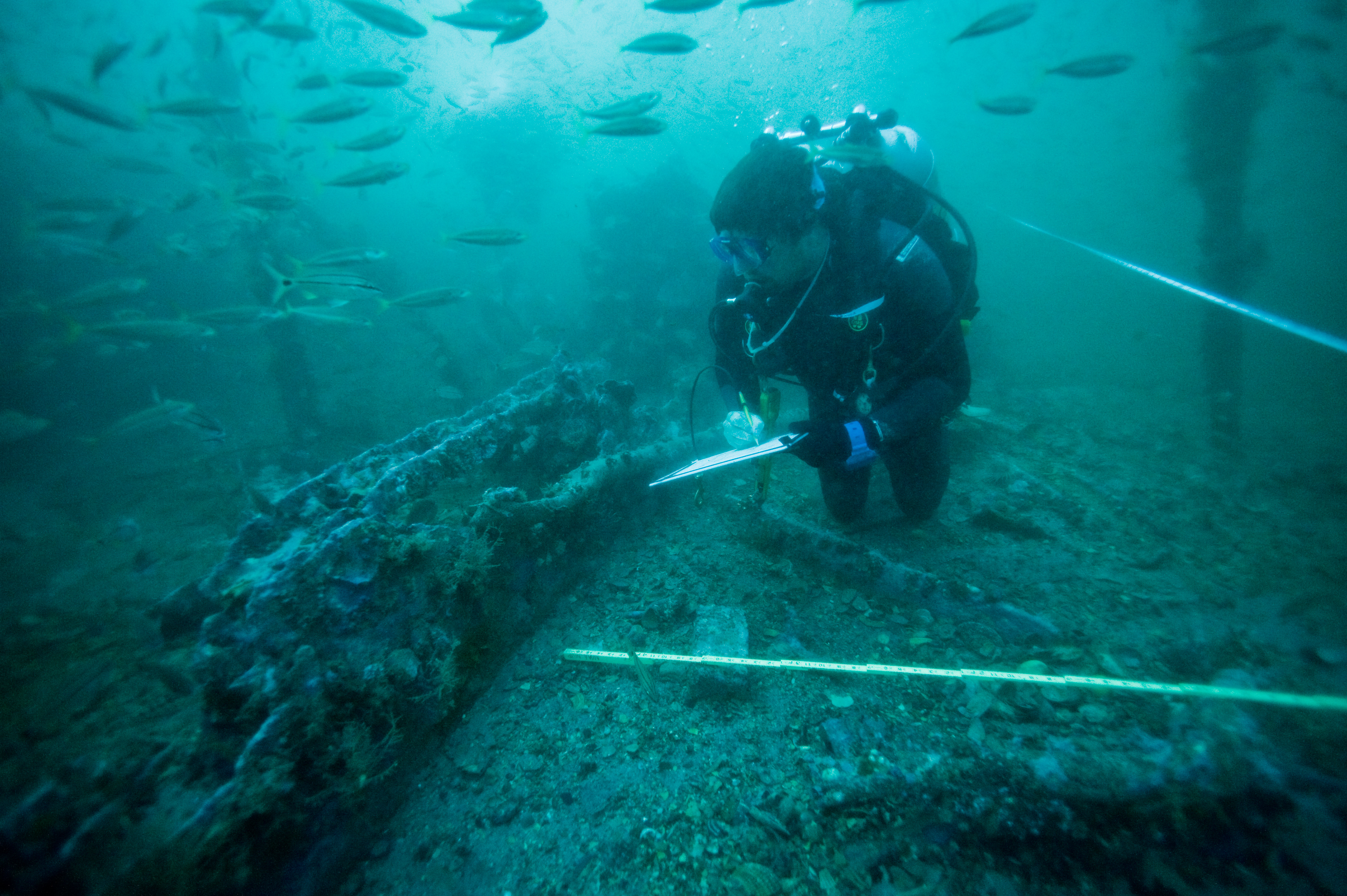HMT Bedfordshire
Ship Stats
Depth: 105 feet
Vessel Type: British fishing trawler converted and militarized for convoy escort and protection duties
Length: 162.3 feet Breadth: 26.7 feet
Gross Tonnage: 443 Cargo: N/A - ASW Trawler
Built: 1935, Smith's Dock Company, South Bank, Middlesbourough, UK
Hull Number: 988 Port of Registry: Morehead City, N.C., USA
Owner: UK Royal Navy (on loan to the United States Navy)
Lloyd's Register Details: Steel hull, cruiser stern, triple expansion, three cylinder engine
Former Names: N/A
Date Lost: May 12, 1942
Sunk By: U-558 Survivors: 0 of 37 survived (37 dead)
Data Collected on Site: Still and video photography; multibeam; sector scan sonar; full site plan; listed on the National Register of Historic Places
Significance: HMT (His Majesty's Trawler) Bedfordshire is significant in the area of military history based upon the vessel's association with Allied military operations at sea off the Outer Banks to combat the German U-boat threat during 1942. The shipwreck symbolizes the United States' unpreparedness and lack of purpose-built anti-submarine warfare and escort vessels that were needed to counter U-boat depredations along the U.S. East Coast at the beginning of World War II. Bedfordshire is representative of a dramatic time in American history when the country was struggling to fight wars on multiple fronts and had already allocated its purpose-built naval vessels to the war in the Pacific and European theaters. Bedfordshire is also significant as an example of a military vessel lost to Axis (U-boat) military actions offshore the United States in World War II as it was sunk, with the loss of all hands, by a single torpedo fired from the German U-boat, U-558, on May 12, 1942. Bedfordshire was the only one of the 24 British armed trawlers to be directly attacked and sunk by a German submarine off the American coast.
Wreck Site
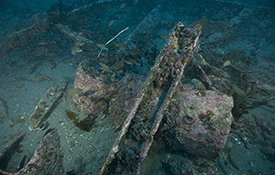
The initial torpedo that struck the vessel caused considerable damage and is likely what resulted in the vessel being broken into multiple sections. The current low profile of the wreckage and lack of deck structures and deckhouses can likely be attributed to historic demolition of the site. It is probable that the wreckage was picked up by Allied patrol craft as an unidentified sonar contact during World War II and depth charges or aerial bombs were dropped on the site. This would account for much of the damage and dispersal of elements of the wreck documented during site investigations.
The main section of the HMT Bedfordshire wreck site is much larger and better defined than the bow piece. There is little relief beyond sections of I-beams, hull plates, pipes, machinery and bulkheads. The shipwreck's mid-ship and aft section is much larger and better defined than the bow. The foremost part of this section is almost entirely covered by sand with the exception of the port side. The vessel's single boiler, including a portion of the cylindrical uptake, provides the highest relief on the site at about six feet. From this boiler aft, much more of the wreckage remains above the sand and is more distinguishable.
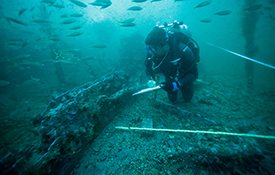
In January 2016, a Memorandum of Understanding between NOAA and the United Kingdom's Royal Navy was signed, formally documenting the cooperation between the two governments regarding the protection, research, education and in situ preservation of HMT Bedfordshire. The United Kingdom has not abandoned or transferred title to HMT Bedfordshire and the vessel remains a sovereign immune State vessel belonging to the United Kingdom and is considered a military wartime grave. In accordance with the agreement, "NOAA intends to continue to periodically monitor and research the HMT Bedfordshire wreck site with the same professional care as it does comparable property of the U.S. and consistent with NOAA policies and practices and rules contained in the Annex to the 2001 UNESCO Convention."

Historical Background
Bedfordshire was built in 1935 at the Smith's Dock Company, Limited, in South Bank, Middlesbourough, England. It was a smaller deep sea fishing vessel designed specifically for arctic trawling. Bedfordshire operated in Arctic waters up until the beginning of World War II. With the onset of war, many trawlers were requisitioned by the Royal Navy and used for military operations. Bedfordshire was soon bought by the Royal Navy for military service and was given the designation HMT Bedfordshire.
HMT Bedfordshire took up escorting and anti-submarine patrols around the southwest coast of England and the Bristol Channel. During this time, HMT Bedfordshire became a well-seasoned patrol vessel, surviving several attacks from aircraft, as well as launching several depth charge attacks on suspected U-boats. After Pearl Harbor, HMT Bedfordshire, along with 23 other vessels were notified that they would be transferring for service in U.S. waters where the U-boat war quickly began focusing on the East Coast of the United States.
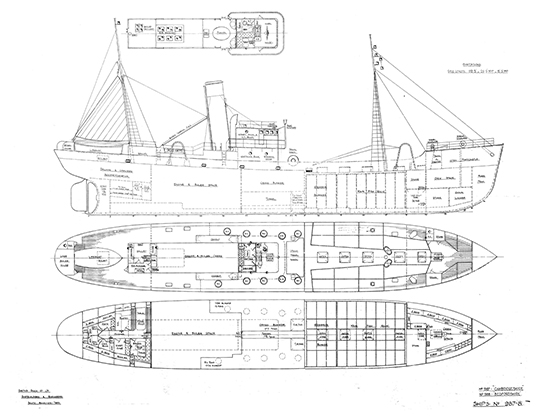
On May 7, 1942, HMT Bedfordshire made its last refill stop in Morehead City, N.C., and returned to patrol duty on May 10. Meanwhile, U-558 was patrolling the waters off Cape Lookout on its way down to the Gulf of Mexico. In the early hours of May 12, U-558 spotted HMT Bedfordshire. U-558 got into position and fired two torpedoes that both missed and went unnoticed by HMT Bedfordshire's crew. U-558 repositioned and fired a third torpedo that hit its mark. A massive explosion nearly lifted the small vessel out of the water and the ship sank immediately. The destruction of HMT Bedfordshire was so abrupt and complete that no distress signal was sent. Of the 37 crewmembers there was not a single survivor. For several days the Navy was not even aware of the Bedfordshire's loss since there were no witnesses, radio signal or survivors. The first indication came when crewmembers began washing up on the beaches along the coast.
Site Plan
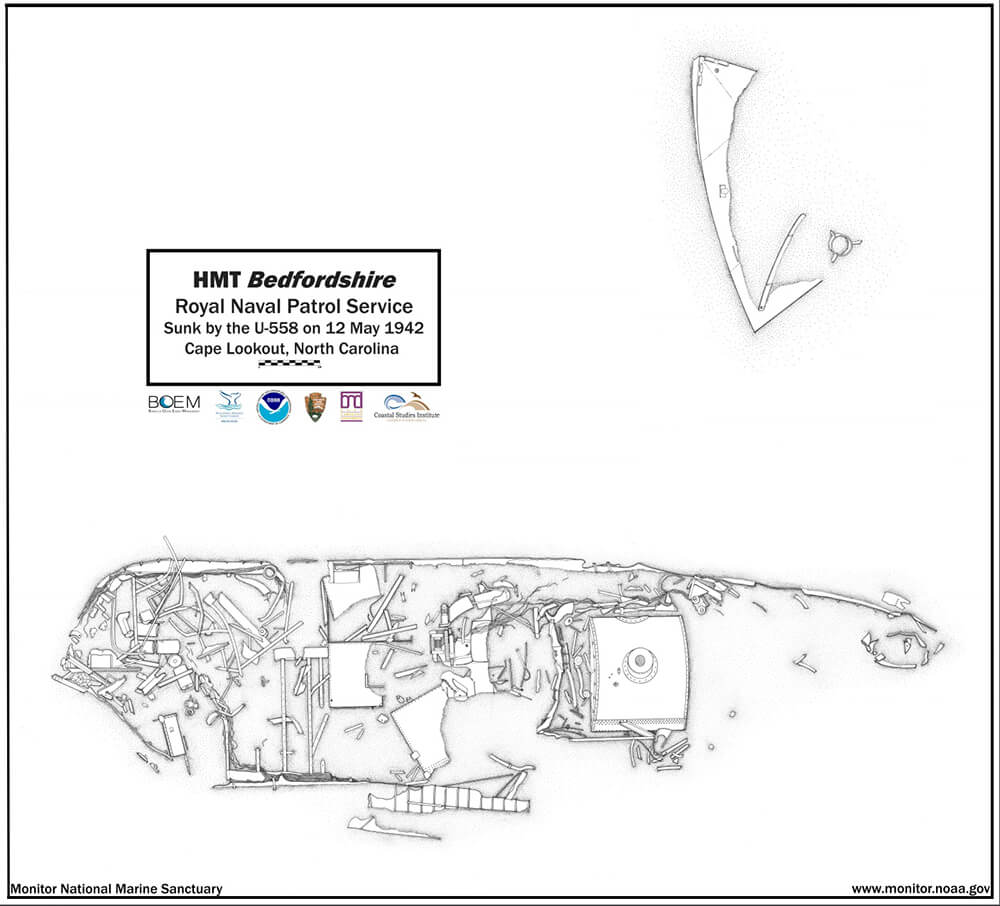
To view additional site plans click here.
Dive Slate
HMT Bedfordshire
Click above to view a dive slate for HMT Bedfordshire.
To view additional dive slates click here.


